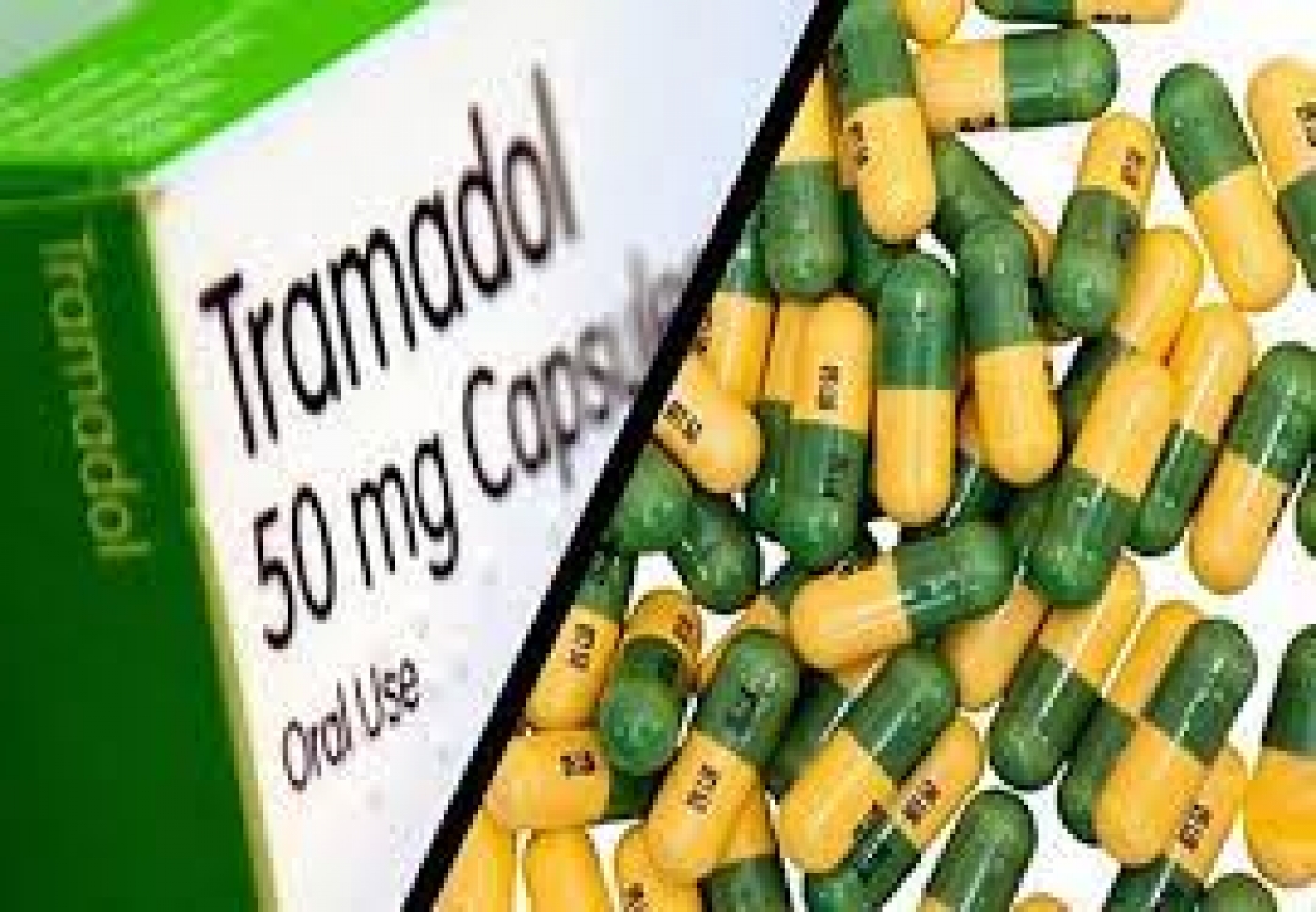The drug Tramadol is a synthetic opioid medicine that is used around the world in the treatment of moderately severe pain. By describing it as synthetic means that it is not available in nature.
It is wholly manufactured in the laboratory and marketed as Tramal, which is one famous trade name among several others available today in many countries. There are generic formulations too. It is available in various forms as tablets, capsules and as an injection. It has no syrup and has no cream. It acts on the central nervous system where most of its effects are initiated and its onset of action takes place in about one hour or less. That makes it a very effective pain reliever with a quick beginning to its effectiveness.
However, its overall potency is just about one-tenth that of morphine, a much more potent drug for pain relief. Together, either of them has got the ability to induce dependence in their users and cause some form of addiction. That is why it is a controlled medication in many countries available only by prescription within the confines of a hospital. In our amazing country, Tramadol was, until recently, obtainable by anyone across the counter so long as the fund was in hand to buy it. And then, it was banned outright.
Tramadol is considered to be a relatively safe painkiller. At the recommended therapeutic doses it is not believed to be capable of causing significant levels of respiratory depression. In patients who suffer from depression of their respiratory function, therefore, the use of Tramadol is not considered safe.
The most common side effects within this safe range are nausea, dizziness and vomiting. It has a lower potential for dependence than morphine and oxycodone, for example. It is mentioned as a step-2 analgesic in the guidelines of the World Health Organisation for the relief of cancer pain. It is also listed in the national essential medicine list for many countries. It is available in different doses: 50mg tablet, 50mg capsule and 100mg in both tablets and capsules as extended-release formulations. There is a 50mg injection as well and this medication is used even in children for the control of pain after operations.
Despite growing evidence of abuse of this medication in West Africa and South Asia mostly, it remains a useful drug for such targeted usage. In one advert that comes to mind, it is presented as a medication capable of providing refuge for the individual from the war of pain! Adorning that page is a picture of the US Navy’s Nimitz class nuclear-powered aircraft carrier.
This medicine is used in the treatment of moderately severe pain, especially that associated with an operation and also for persistent pain such as might be seen in people with advanced cancer. In this latter aspect, it is routinely in use in a number of healthcare systems for the treatment of the kind of pain associated with osteoarthritis. For such patients, it is regarded as a routine medication with millions of doses being prescribed annually around the world.
Tramadol is particularly effective in certain situations in which the use of non-steroidal anti-inflammatory drugs has failed to produce the desired effect. It is, therefore, not an NSAID and will not reduce inflammation and swelling in tissues if used alone. To produce such an action, it does need to be taken alongside another pain reliever with a different mechanism of action and is able to produce such an effect. In utilizing such complementary effects of medications, care must be taken not to give Tramadol with another opioid analgesic like Pentazocine or drugs called monoamine oxidase inhibitors, mostly used in the treatment of depressive illness.
MOIs are already notorious for being responsible for causing a wide array of side effects in the course of their use. When taken together with a medication like Tramadol, they can actually cause death. In the field of pain control, Tramadol is similar in effectiveness to Codeine but proves to be superior when used with Paracetamol or Ibuprofen.
However, Tramadol can make the user drowsy and there are frequent warnings not to operate machinery or drive when taking it. It can also make the user feel light-headed or even become dizzy. At the other extreme of its range of effects, Tramadol can provoke sudden spells of vomiting without any previous warning. It is a bit odd, of course, to see someone who is not obviously ill just vomit without cause.
For some other people, it causes their skin to itch, which is sometimes so severe that the people are unable to sleep. It is safe to wait for the effects of Tramadol to wear out of the system before a user takes alcohol. While this clearance takes about one and a half days for the short-acting formulations to clear, it takes a bit longer – as much as two and a half days for the long-acting formulations to be removed from the system. Only after such an interval is it safe to take alcohol as well.
Tramadol can become a habit-forming medication in which people become physically dependent on its use. This can happen after a lengthy period of use but because we are all different in our ways, especially with the ways in which we break down medications and poisons, such a drug would affect people in different ways. Addiction can rapidly occur among the people who take larger than normal doses, and on this page in the past, we have seen a reader who let it be known that she was dependent on Tramadol, having developed a capacity to take as much as 300mg of the medication before she would feel normal.
This is a huge problem of course, not the least because the easy ability to obtain the medication only served to fuel her desire. As Tramadol and alcohol both depress the central nervous system, they would slow down the brain and reduce muscle coordination as well as the ability to think clearly. Therefore, taking alcohol while also using Tramadol is not a good idea. This sort of combined usage helps to intensify the side effects of each one, thereby causing both physical and mental impairment. Both of them also produce relaxation and euphoria.
Tramadol is capable of causing a wide range of side effects, which include headaches, nervousness, tightness in the muscles and changes in the mood. It can also cause a dry mouth, a rise in blood pressure, heartburns and uncontrollable shaking of different parts of the body. More severe side effects include irritability, loss of muscle coordination, nausea and/or vomiting, fainting attacks and seizures.
In some people, a rash may develop with or without itching. Men may develop some difficulty in achieving and maintaining an erection while women may experience irregular menstruation. If a person takes alcohol while taking Tramadol as well, the above side effects will actually get worse. This is because both of them are broken down in the liver, which is the body’s laboratory that performs such functions.
Consequently, by acting together, they can cause a rapid heart rate, slow and irregular breathing, an arrest of the respiration altogether and almost certain death if there is no immediate medical help available. This is because both substances together produce profound intoxication that does the person in. Profound seizures, cessation of normal breathing and coma can rapidly result in fatal consequences.
Questions ad answers
Greetings, Doctor. May God continue to bless the works of your hands. Please, I have recurrent pains in various joints in my body and they are usually in my right side alone. My right hip, right knee and right ankle are involved, including a particular place in the right side of my lower abdomen. I have done numerous tests and X-rays but no cause has been found. Also, I have had an appendectomy, so I am sure it is not appendicitis. However, lately, my mother has been screaming at me to stop drinking cold water so that the pain will not come again. Is there any truth in this? I am now 27. Thank you. 080XXXXXX20
Answer: Thank you for your prayers. There is no truth in your mother’s assertion that if you do not drink cold water, the aches in your joints will stop. As for the location of the pain, you should seek an audience with a rheumatologist for investigation and treatment. Water is not able to cause any of the claims above. Please continue to drink and enjoy your cold water. It is certainly healthy to do so, especially in the terrible weather we now have.
Hello, Doctor. A dementia patient got lost in a hospital in Lagos. Tell people to put trackers on their loved ones with dementia for easy tracking. Thanks. 080XXXXXX75
Answer: Thank you very much for the advice and the contribution. I am sure they have heard you loud and clear. However, that may be viewed as an ethical issue with the potential to intrude into people’s privacy. It is not widely in use even in those societies that depend very much on electronic monitoring and surveillance techniques.
Dear Doctor, I am 18 years old. Since about a week ago, I have started feeling serious pain in my throat when I am swallowing. It is so painful that it even extends to my ear so I went to the staff clinic of my school to complain and they gave me Amoxyl and Flagyl, which I have used for two days now without any improvement. I can’t eat at all and I am forced to take coke and snacks, which I don’t really like. I got one of my friends to take a picture of my throat with my mouth open so that you can see what I am talking about. Apart from the swelling, there is something on top that looks like a white cap. Please what is this thing and are the drugs I am using now going to cure it? 090XXXXXX04
Answer: Thank you very much for your question. The pictures you sent are quite clear and they show that you have tonsillitis. There is the formation of an abscess already in the left one and you do need something stronger than what you are using now. In addition, you will need to include a twice-daily gargle with salt-rich warm water, which will soothe the area and you should include a pain reliever as well. (This patient was converted to Augmentin and Ibuprofen and she made a rapid improvement in just 36 hours).
Good afternoon, Doctor. How is your day going? I just noticed over the last five days that my two legs were swollen. I am 63 years old and have had high blood pressure for more than 18 years. I often stand for several hours at a time or sit at a place in my office but when I wake up in the morning, the swelling is mostly gone. I take my anti-hypertensives regularly and my readings have not gone above 135mmHg for more than six months, so I am worried. In November last year, I underwent a comprehensive annual medical checkup at a prominent diagnostic centre in Lagos and apart from high cholesterol, there was no problem. What could be the cause of this and what should I do? 080XXXXXX97
Answer: Thank you and good day to you as well. My day is going quite well. The problem you highlighted above is eminently treatable. If you spend that much time sitting down or standing because of the kind of work you do, and you are in such good health as you have described, you should try to move around for about five to 10 minutes every two hours or so in such a position. In addition, you should try to raise your legs on a stool if you are seated or on pillows when in bed. If there is no improvement after commencing on these measures within a week, you should see your doctor for a physical examination.
Dear Doctor, I’m an avid reader of your column in Sunday PUNCH and I cannot thank you enough for your good work to humanity. I am a 52-year-old woman working in one of the federal agencies. I noticed that I have a pain arising from my neck which has been on for a while now. The pain radiates to my shoulder. It is quite persistent and does not respond well to paracetamol or diclofenac both of which I have used alone and together at different times. Some time ago, more than two years now, I was provided with a cervical collar in the US and physiotherapy involving some kind of traction. I was told that two bones in my neck were rubbing on each other. Now, I am feeling pins and needles in my fingers and I am in a panic. What should I do please? I need help. 08XXXXXX81
Answer: You already have some background knowledge about this and it has probably not just come back, but worsened a bit. It would appear now that those small bones in your neck are not only rubbing against one another but have also trapped a nerve or two between them thus giving you the funny sensation you have in your fingers. The best thing to do is to see an orthopaedic surgeon for assessment and based on their findings, they could ask you to also visit a spine surgeon. The necessary X-rays and relevant scans will help show if the deterioration is the case.
Hello, Doctor. Meth (methamphetamine) called mpuru-miri in Nigeria is the drug of choice for the white blue-collar American worker. It appears Nigerian youths have developed a taste for it. Opioids on the other hand is the general name for oxycodone, oxycontin, dilaudid etc. There’s an ongoing epidemic ravaging white American boys. Thousands of them are “ODing” and “dieing” daily from overdosing…..our physicians who work in the field of pain management in the United States should be the experts for opioids as pain management specialists. Soon, we will need them here at home in large numbers. 080XXXXXX53
Answer: This provides a deep insight into the problem and shows that what we are currently toying with and making fun of is likely to become an epidemic among our youths in the near future. Thank you so much for the education and your contribution.
Doctor, I wish you the best of luck this year. Please, sir, I have just completed my drugs for malaria. The drugs are coartem and amoxil by Beecham. Sir, it was the lab test that revealed that malaria was ++, hence the above drugs and some injections for three days were prescribed for my use. Meanwhile, I am treating high blood pressure and my sugar level with the following:
1) Amlodipine
2) Lisinopril
3) Glucophage
4) Amaryl
But the issue at hand now is that I am always feeling very weak. Please, sir, what can be responsible for this and what can you recommend, sir? Your timely response shall be deeply appreciated. 080XXXXXX50
Answer: There are various ways to interpret the reasons for your weakness; the first is that since you began to experience this degree of weakness after your recent issues with malaria, the medications you used may be responsible for causing such weakness. This is especially true if you have only completed the treatment within the last few days. The second reason is that malaria may not have been fully treated yet judging from the load of parasites found in your blood. In that case, it would be wise to repeat your blood tests to see if they have been cleared from your blood. Finally, with the issue of malaria, it might have lingered in your body for some time before you obtained treatment in which case, even with successful therapy, you are now struggling with post-malaria debility. Lastly, it is important to review your blood sugar medications during periods of stress such as is represented by an illness like malaria. If the blood sugar medications were raised in dosage during that time, they should now be tuned downwards so that you are not unwittingly taking an overdose of the drugs. To isolate the probable cause of such weakness, your blood sugar needs a recheck and malaria parasites must be seen to be cleared from your bloodstream. After the cause is known, a remedy should be easy to get.
Source: HealthWise










